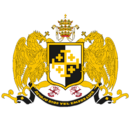Creeperian art
| Part of a series on the |
| Culture of Creeperopolis |
|---|
 |
| Society |
| Topics |
| Symbols |
Creeperian art has been influenced by proto-Creeperian, Romanyan, Deltinian, Castillianan, Atlántidan, and San Carlos Islander styles of art. Proto-Creeperian art was abandoned following the Christianization of the country, with many statues and paintings of the pagan gods being destroyed on the orders of the Creeperian Catholic Church. Following the Deltinian conquest of Creeperopolis, Christian icons of Jesus, the prophets, and the saints were destroyed as the Deltinians viewed them as unacceptable and disrespectful.
Following Creeperopolis' independence in 1231, religious art experienced a renaissance, especially during the Creeperian Golden Age of the late-1300s. Most paintings, sculptures, and mosaics of this era were religious in nature and many of the most well-known works of Creeperian Catholic art originated during the 1300s, 1400s, and 1500s. During the 1800s, Adolfo III promoted introducing proto-Creeperian styles of art to the traditional styles of art commonplace in Creeperopolis at the time.
During the Creeperian Civil War, the Imperial Council and the Creeperian Catholic Church sought to protect many works of art from being looted or destroyed. Some notable lost works from the civil war include La'Llegada de Santiago Matadeltinianos and Almadinat Almuqadasa, among others. Some works of art which were preserved were restored to their previous owners, while most were seized by the Creeperian government and placed in museums across the country.
The Creeperian government has commissioned various artists to produce official portraits for the monarchy, government officials, and military officers. The imperial family owns one of the largest and most expensive art collections in the world, with most works being held at the family's various imperial palaces across the country. The government has promoted various styles of art, including impressionism, romanticism, realism, and neoclassicism, while suppressing and discouraging others such as modernism, surrealism, and abstract art. Some famous Creeperian artists throughout history include Fabián Hernández Castro, Guadalupe Obregón Salinas, Juan Quiñónez Rivas, Leonora Linares Valdéz, Pedro Zaldívar Alvarado, Felipe Serrano Casablanca, among others.
